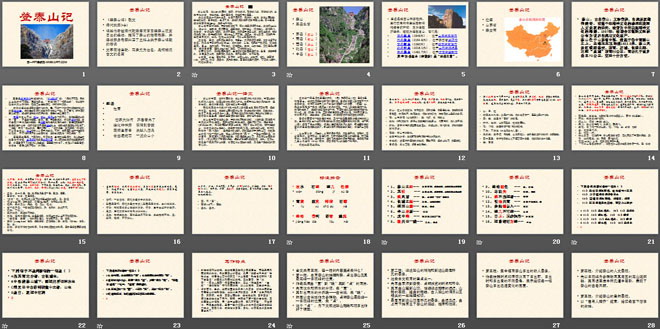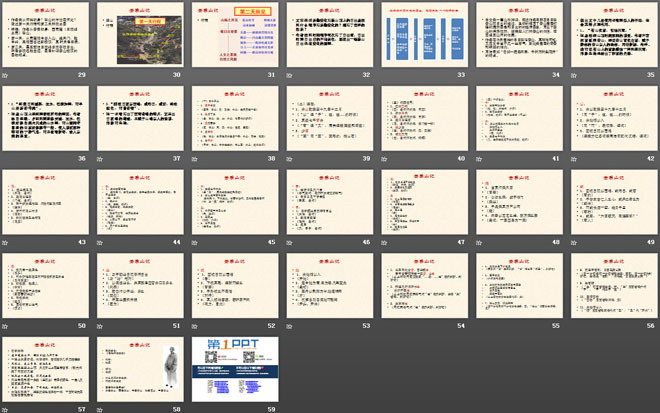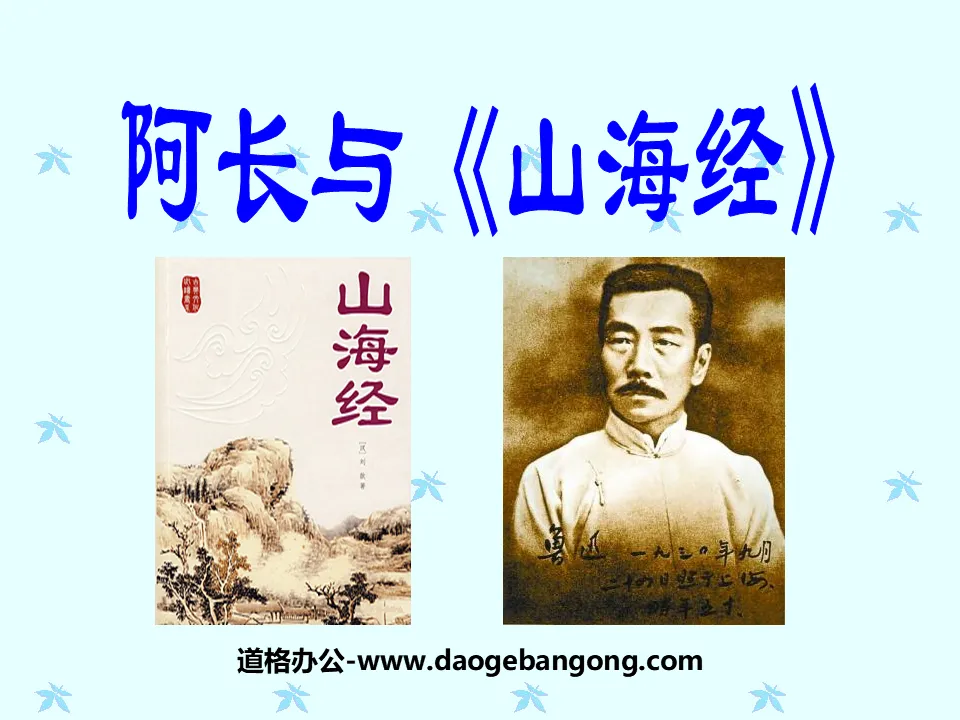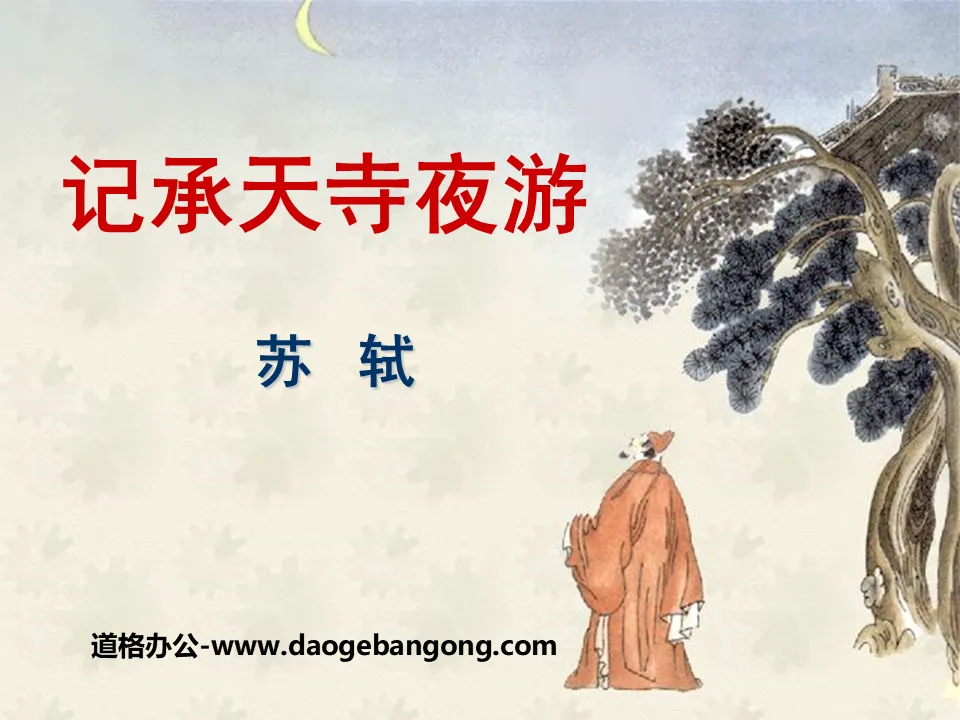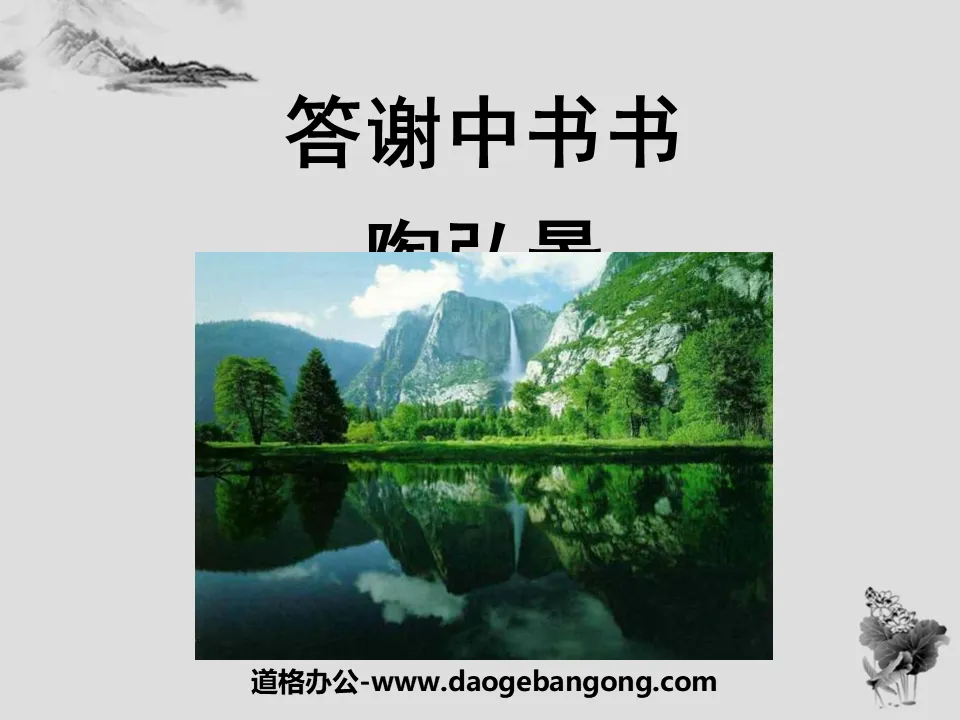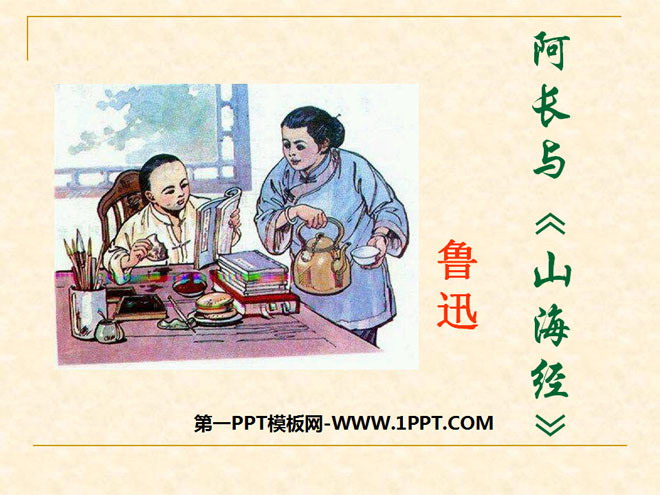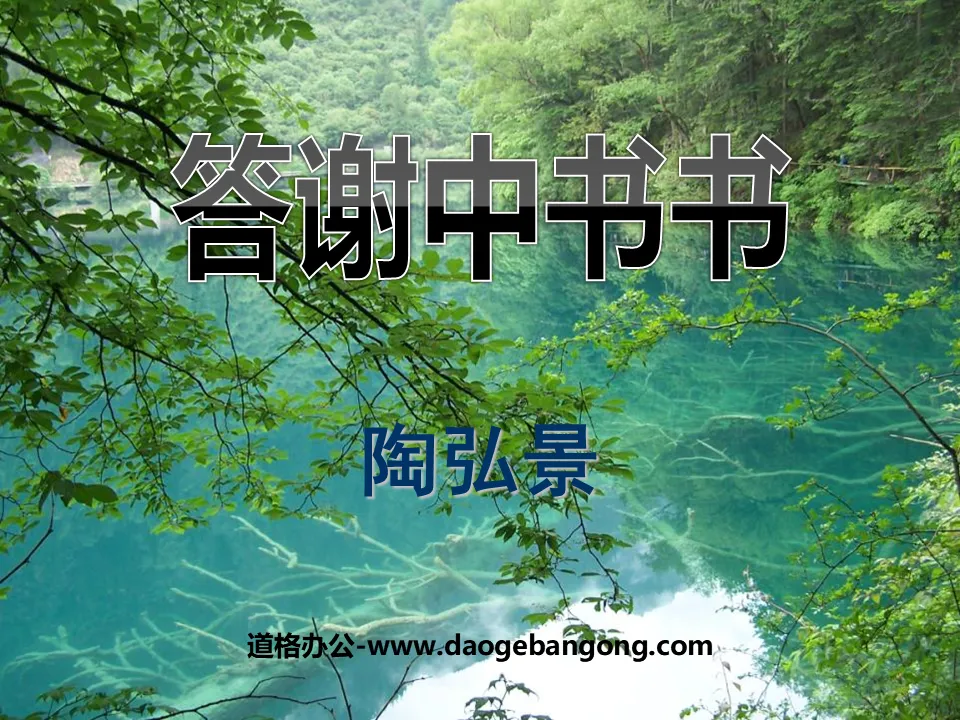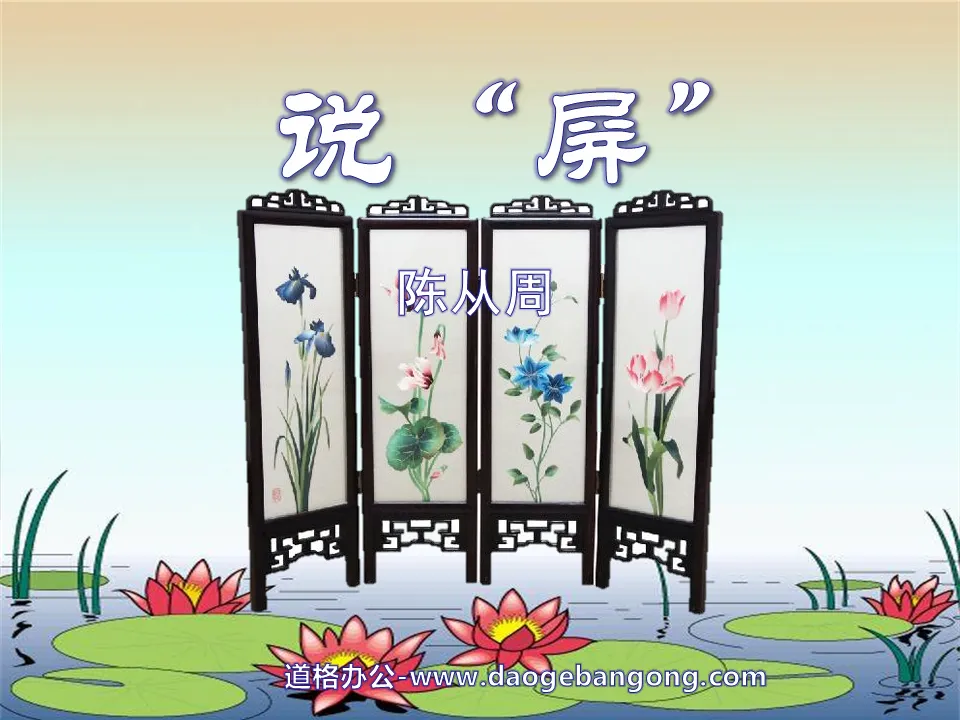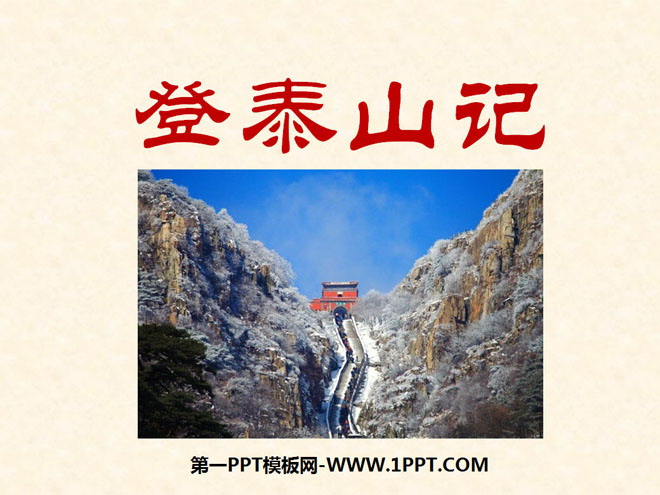
| Category | Format | Size |
|---|---|---|
| Lu Jiao edition seventh grade Chinese language volume 2 | pptx | 6 MB |
Description
"Climbing Mount Tai" PPT courseware
"Climbing Mount Tai" is an essay written by Yao Nai (nài) of the Qing Dynasty. It describes the author's experience of climbing Mount Tai in the snow to watch the sunrise during the Qianlong period of the Qing Dynasty. He describes the majestic situation of Mount Tai and corrects the historical records of Mount Tai through personal inspection. The text is concise and vivid, and the description of scenes is particularly excellent. It is a famous piece of ancient Tongcheng style prose.
Taishan, also known as Daishan in ancient times, is also called Daizong. The natural landscape is majestic and wonderful, with thousands of years of spiritual culture and cultural landscape as the backdrop. It is known as the epitome of the Chinese nation's spiritual culture. In 1987, it was announced as a world natural and cultural heritage by UNESCO. Mount Tai is located in the central part of Shandong Province, rising from the mountains in central and southern Shandong. The main peak, Yuhuangding, is 1532.8 meters above sea level. Taishan Scenic Area spans between Tai'an, Jinan, Licheng and Changqing. It is 60 kilometers from Jinan, the "Spring City" in the north and 70 kilometers from Qufu, the hometown of Confucius, in the south. The transportation is very convenient.
Annotate pinyin
Wenshui Stone Dingge Ji Lai
wèn dèng jī cú lái
Nanlu Xuyu 樗� Shijie
lù yú chū pú xià
Jianghao Daici Ruochi Yao Nai
jiàng hào dài lóu nài
1. The Sun of Mount Tai - the south of the mountain, the north of the water, here refers to the south of Mount Tai
2. Its Yin - the north side of the mountain, the south side of the water, here refers to the north side of Mount Tai
3. Take advantage of the wind and snow - take advantage of it, which means "to brave"
4. The limits of the Great Wall - limits, here refers to the city wall
5. Then we reached the top of the mountain - the peak, the pinnacle
6. Living in the fog in the middle of the mountain - stop
7. Wushenhui - the last day of each month in the lunar calendar
8. A line of clouds in the sky - the end, the extreme
Which of the following sentences is not a judgment sentence is ( )
A When it is divided into north and south, it is the ancient Great Wall.
BThe middle valley surrounds the city of Mount Tai, which Li Daoyuan calls "the water around it"
C I saw dozens of white cypress trees standing in the clouds. It was a mountain.
D is the day when I look at the stone carvings on the road
Which of the following statements is incorrect ( )
A The south side of the mountain and the north side of the water are "yang"; the north side of the mountain and the south side of the water are "yin".
B The city wall is divided into inner and outer walls. The inner one is called "city" and the outer one is called "guo". In the sentence "looking at the city wall at night", "city wall" generally refers to the city wall.
C. The first day of each month in the lunar calendar is "Suo", the fifteenth day is "Wang", and the last day is "Hui".
D Tongcheng Yao Nai Ji, using Tongcheng to indicate the literary school to which he belongs.
There are five paragraphs in the full text. What is the main point of each paragraph?
The first paragraph: Summarize the geographical situation of Mount Tai, and point out the location of Mount Tai and its highest peak, Riguan Peak.
The author uses a writing method from "surface" to "line" and then to "point":
First, write about the diversion of Wenshui River and Jishui River, which is "face";
Then we introduce the dividing line between the two rivers - the ancient Great Wall, which is the "line";
Then, using the ancient Great Wall as a reference, the location of Riguan Peak, the highest peak of Mount Tai, was pointed out as the "point".
This "point" paved the way for the following description of the climbing route and sunrise viewing.
The second paragraph: describes the difficulty of mountain climbing and the scene seen after reaching the top of the mountain.
This is one of the focuses of this article.
First, write about the journey from the capital to Tai'an, indicating the time and season of the tour;
Then write from the foothills to the top of the mountain, describing in detail the distance of the journey, the stone steps on the mountain road, the routes passed, the conditions of ancient people climbing mountains, and some related geographical knowledge;
Finally, I wrote about the scene I saw after reaching the top of the mountain. I wrote about the height, majesty and magnificence of Mount Tai from far to near and from top to bottom.
Where did the author start from? Where is the climbing direction? Briefly describe the itinerary of the first day and the scenery seen on the second day
Clarification: The author set out from Tai'an and climbed the mountain in the southwest foothills (south of Riguan Peak).
Day 1: Enter the mountain from the southern foot through the middle valley, pass by Tianmen, cross the middle ridge, and then follow the west valley to reach the top. It is already getting late.
The next day: Go to the peaks in the morning and watch the sunrise at the pavilion, then visit the scenic spots and historical sites, and finally make a note of the scenery and features at the top of Mount Tai.
The article describes the sunrise on the top of Mount Tai through changes in scenery. In what order does the article describe the changes in scenery? What kind of scenery is described?
The author writes about the different scenery before, during and after sunrise in chronological order, showing a picture of Mount Tai's rapidly changing sunrise.
Find several places where metaphors and personification are used in the text, and understand their characteristics and functions.
1. "The Cangshan Mountain is covered with snow, and the sky is brightly lit to the south."
This is the feeling you get when you first reach the top of the mountain. The author does not say that the green mountains are covered with ice and snow, but says that the green mountains carry white snow on their backs, giving the static green mountains a human dynamic, and the language is novel and expressive. Furthermore, the snow on Cangshan Mountain illuminates Tiannan like a candle, vividly depicting the brilliance of the snow.
2. "Looking at the city wall in the evening when the sun shines on it, Wenshui and Cuulai are picturesque, while the mist in the middle of the mountain looks like it."
This is the picture from the top of the mountain looking down and from a distance. The author looks far away, the sunset shines on Tai'an City, Wenshui and Cuulai are like natural landscape paintings, and the clouds and mist lingering on the mountainside are like ribbons. It makes people feel the unique tranquility, and the metaphor is novel, giving people a beautiful enjoyment.
3. "Looking back at the sun and looking at the peak to the west, you may see the sun, or you may not, the colors are bright and crimson, but they all appear to be hunchbacked."
This metaphor describes the characteristics of the peaks in the southwest, and also shows the majesty of Riguan Peak, and gives the peaks human emotions, images and vividness.
(1) Differences in ancient and modern meanings
1. As for Tai'an (as for, ancient meaning: arrive, arrive; modern meaning: to mention another matter)
2. It’s the end of the month (yes, ancient meaning: this, this; modern meaning: often used as a judgment word)
3. Fuxunxigu (fu, ancient meaning: again, again; modern meaning: back and forth, repeat)
4. Wushenhui (hui, ancient meaning: the last day of each month in the lunar calendar; modern meaning: dim, night)
5. Multi-square (square, ancient meaning: square and neat; refers to mountains and rocks; modern meaning: mathematical term)
(2) General holidays:
1. Yu Yi Qianlong in December of the 39th year ("Yi" refers to "Yu", in, at the time of...)
2. Its level is more than seven thousand ("you" is connected with "you", used to connect integers and zeros)
3. Shaowan ("圜" is the same as "yuan", round, referring to rocks)
Sentence explanation
The road is foggy and slippery, making it almost impossible to climb.
The road was filled with fog, ice and slippery conditions, and the stone steps were almost impossible to climb.
As we go up, Cangshan Mountain is covered with snow, and the sky is brightly lit to the south.
When I reached the top of the mountain, I saw that the green mountains were covered with white snow, and the (snow) light illuminated the southern sky.
The clouds in the sky are of different colors, and they become five colors in a moment
The clouds on the sky formed a line (showed) strange colors, and then turned into colorful
The sun is as red as red pills above, and there is red light below, shaking and bearing it
The sun has risen, its pure red color is like cinnabar, and there is a red light swaying below, supporting it
Keywords: Climbing Mount Tai teaching courseware, Shandong Education Edition seventh grade Chinese PPT courseware download, seventh grade Chinese slide courseware download, Climbing Mount Tai PPT courseware download, .PPT format;
For more information about the PPT courseware "Records of Climbing Mount Tai", please click the "Records of Climbing Mount Tai" ppt tag.
"Climbing Mount Tai" PPT:
"Climbing Mount Tai" PPT Part One Content: Literacy Objectives 1. Understand the relevant knowledge of the author Yao Nai and the Tongcheng School, and understand the stylistic characteristics of travel notes. 2. Master the important classical Chinese knowledge points such as content words, function words, and special sentence patterns in the text. Recite the full text. 3. Study this...
"Chibi Fu" and "*Climbing Mount Tai" PPT courseware:
The first part of the PPT courseware content of "Chibi Fu" and "*Climbing Mount Tai" PPT courseware: [Reading Expo] 1. The charming writer should be solemn in style, clear in tone and elegant in speech. Yao Nai (17321815), courtesy name Ji Chuan, is named after his study Xibao
"Chibi Fu" "*Climbing Mount Tai" PPT:
"Red Cliff Ode" and "*Climbing Mount Tai" PPT Contents Part One: Independent study of Red Cliff Ode 1 before class, knowing the background In the second year of Yuanfeng, Emperor Shenzong of the Song Dynasty (1079), Su Shi was demoted to Huangzhou (today's Hubei Province) for opposing Wang Anshi's new law① Huanggang) served as deputy envoy of Tuanlian. Autumn and winter of the fifth year of Yuanfeng (1082)...
File Info
Update Time: 2024-07-03
This template belongs to Chinese courseware Lu Jiao edition seventh grade Chinese language volume 2 industry PPT template
"Climbing Mount Tai" PPT courseware Simple campus recruitment activity planning plan summary enterprise and institution recruitment publicity lecture PPT template is a general PPT template for business post competition provided by the manuscript PPT, simple campus recruitment activity planning plan summary enterprise and institution recruitment promotion Lecture PPT template, you can edit and modify the text and pictures in the source file by downloading the source file. If you want more exquisite business PPT templates, you can come to grid resource. Doug resource PPT, massive PPT template slide material download, we only make high-quality PPT templates!
Tips: If you open the template and feel that it is not suitable for all your needs, you can search for related content "Climbing Mount Tai" PPT courseware is enough.
How to use the Windows system template
Directly decompress the file and use it with office or wps
How to use the Mac system template
Directly decompress the file and use it Office or wps can be used
Related reading
For more detailed PPT-related tutorials and font tutorials, you can view: Click to see
How to create a high-quality technological sense PPT? 4 ways to share the bottom of the box
Notice
Do not download in WeChat, Zhihu, QQ, built-in browsers, please use mobile browsers to download! If you are a mobile phone user, please download it on your computer!
1. The manuscript PPT is only for study and reference, please delete it 24 hours after downloading.
2. If the resource involves your legitimate rights and interests, delete it immediately.
3. Contact information: service@daogebangong.com
"Climbing Mount Tai" PPT courseware, due to usage restrictions, it is only for personal study and reference use. For commercial use, please go to the relevant official website for authorization.
(Personal non-commercial use refers to the use of this font to complete the display of personal works, including but not limited to the design of personal papers, resumes, etc.)
Preview

